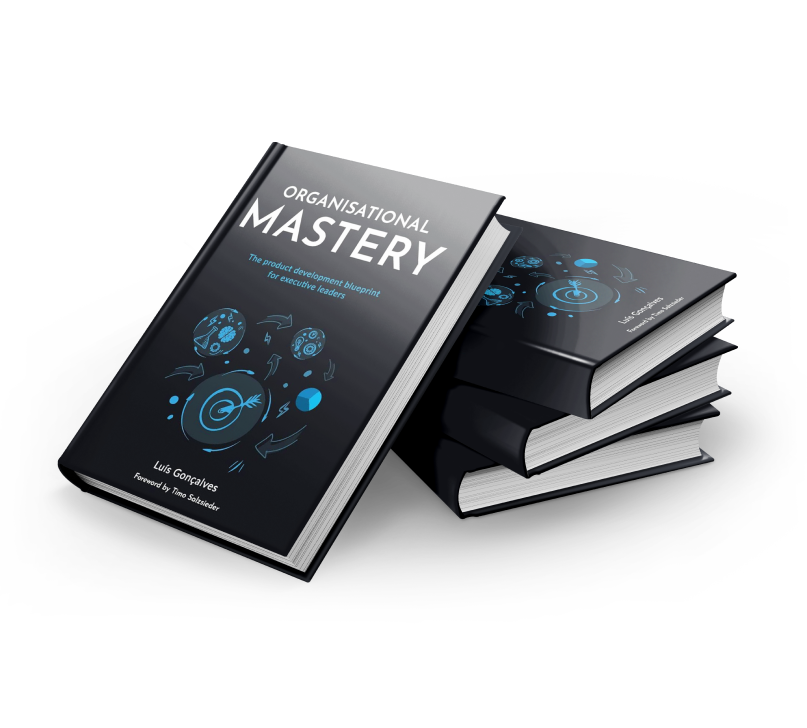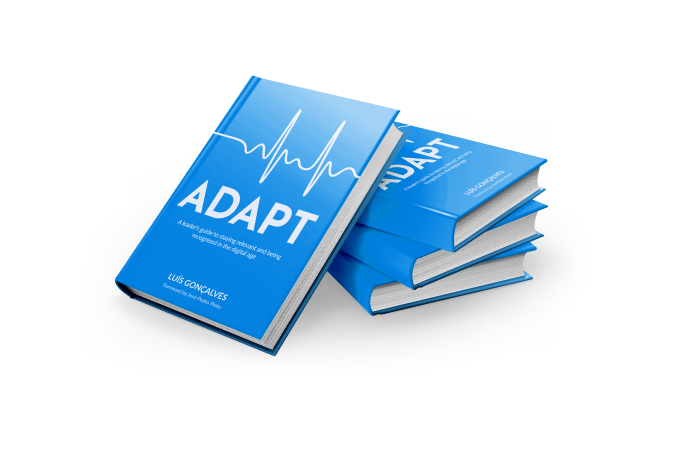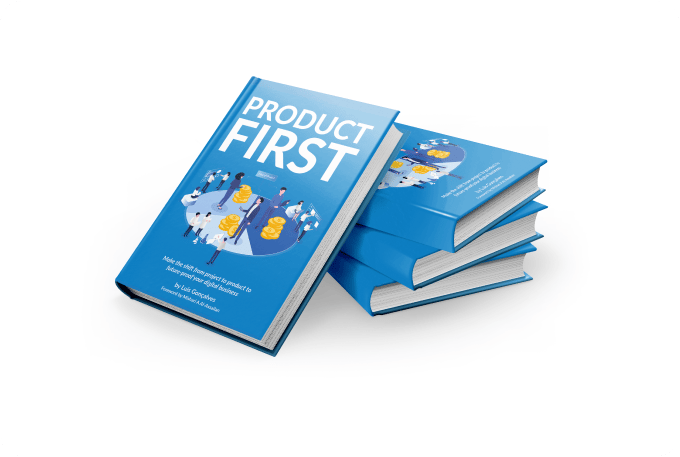Share this
Lean Change Management Book
by Luis Gonçalves on Jan 13, 2024 5:52:47 AM
Lean Change Management Book - Understand what makes your organization tick
Resisting the change is a natural reaction, when you don´t involve people affected by the change. Lean Change Management book written by Jason Little shows how to implement successful change through examples of innovative practices that can dramatically improve the success of change programs.
In this article, let´s focus on the Insights, the first step of the Lean Change Management Cycle by Jason Little.
Insights is the first step of the Lean Change Management Model, but change has really no logical starting point. Change agents are always stepping in the middle of constantly evolving reality. However, traditional, plan-driven methods presume that change has a logical starting point. The traditional project contains a plan that is created based on organizational insights. By the time the plan is put in practice, the reality has changed, and the plan is no longer up-to-date.
Plans become out-of-date so quickly because there is simply too much emphasis on trying to create a perfect change plan. And as everyone thinks the plan is perfect, then they hit the wall!
It´s important to break down the plan into smaller chunks and releasing those changes slowly to the organization. This approach will reduce confusion caused by introducing too many changes and it helps the adapt the feedback and shape the future changes. This is called a feedback-driven approach.
And this feedback begins at the first step - generating Insights. Insights can be generated from various practices or assessments.
After gathering Insights, you create Options based on different points of view. You can for example consider the differences and similarities between how managers feel about the change.
Sometimes it´s hard to start facilitating the change. You need to get feedback first to do the next step. You will only understand the impact of the changes after you receive feedback.
Practices that generate Insights
Let´s take a look at Practices that generate Insights as explained in the Lean Change Management book.
Practices are specific processes or actions to generate Insights. There are many change management processes that have their own practices, so you can freely combine any of theses.
Jason Little in his Lean Change Management book is focusing on 5 main practices for generating Insights:
- Information Radiators
- Lean Coffee
- Culture Hacking
- Retrospectives
- Force Field Analysis
Information Radiators
Information Radiators is a term initially used by Alistair Cockburn. The Information Radiators are visual management tools and help build trust by making work transparent.
These are simply sticky notes used on a wall. They´re big, easy-to-read, and help everyone understand the complexity of knowledge work. Sticky notes can help manage any level of complexity, not matter how big your project is. You can even visualize work for a 300 person department.
Visualizing work on a wall using sticky notes creates more effective collaboration and cooperation, compared to filing details into a software.
Lean Coffee
Lean Coffee is a perfect way to maximize the communication when there is anger, uncertainty or frustration at stake. Lean Coffee is a Lean approach to running an informal meeting. The participants decide on the agenda, which normally has a certain theme.
A typical set-up of a Lean Coffee session:
- The facilitator sets up a Kanban board with 3 columns: To Discuss, Discussing, and Discussed
- The facilitator shares the theme. Participants write down questions related to the theme on sticky notes.
- All sticky notes are posted on the wall or flip chart to the column "To Discuss".
- The facilitator reads aloud the questions and if necessary, the person who wrote the question can interfere.
- Now is a voting time. To decide which topics to talk about first, everyone votes twice. The participants vote by marking the sticky note with a dot. The sticky note that receives the most votes is put into the "Discussing" column. The remaining notes are arranged in the "To Discuss" column based on priority.
- Each topic is discussed for 5 minutes. Afterwards, people vote to continue the discussion for another 2 minutes.
Culture Hacking
Culture Hacking, term used by Stefan Haas, is a practice that contains 3 components: the Crack, the Hack, and the Hacking Zones.
The Crack
A Crack is an organizational dysfunction that feels uncomfortable. The Crack creates tension, frustration, or even bad vibes. You can see it as conflicting goas in the organization, false assumptions, or unexpressed feelings that could serve as leverage for the hack.
The Hack
The Hack is the action you take to expose and point out the crack to the organization. It´s a successful intervention that exploits the crack to influence the culture of an organization. You´ve probably experience people saying: "Well, that´s just the way things work around here.". The Hack is something you do to expose the reality so that people simply see the status quo. By exposing this reality in a polite way, you´ll open their eyes and make them aware of the dysfunction.
Hacking Zones
Hacks have 3 hacking zones:
- Green Zone (Safe): These are gentle warnings that will help an organization become self-aware. They´re the least disruptive.
- Blue Zone (Risky): These hacks are risky and can result in the opposite effect you´re trying to achieve.
- Red Zone (Dangerous): These hacks are the most disruptive and can lead you to be fired. They can also harm the company.
Agile Retrospectives
Retrospective is a meeting the team has every after Sprint or Iteration. After each sprint the team reflects on what worked well and wha did not, and what needs to be changed.
Retrospectives are a powerful practice for understanding the current situation. Frequent feedback through retrospectives increases communication and transparency.
Force Field Analysis
Force Field Analysis is practice known by Kurt Lewin, a social psychologist and pioneer of organizational psychology and change management.
Force Field Analysis is a great practice to find out what´s working against the change and what is is working to support it. It´s a simple technique that is helpful for making sense of what happens during a change process.
Assessments that generate Insights
Assessments are more formal ways of generating Insights. These assessments provide valuable Insights, but require big data analysis.
There are 3 types of assessments:
- Prosci ADKAR
- OCAI Cultural Assessment
- Schneider Culture Model
Prosci ADKAR
It´s one of the most popular change management method, many companies follow it because it´s logical and straightforward.
ADKAR has 2 dimensions - the Business and the People dimension.
The Business dimension has 4 steps:
- Business need - business need and opportunity identification
- Concept and Design - plan creation for a change process
- Implementing - executing the change
- Post-implementation - project post-implementation activities
The ADKAR assessment can be a valuable tool for understanding the current situation at the beginning of an organizational change.
OCAI - Organizational Culture Assessment Instrument
The main concept behind OCAI model is the Competing Values Framework. This framework refers to sense-making device that helps leaders understand how to manage the harmony and tension that occur in the organizations.
The OCAI model describes 4 culture typs:
- Clan: Internally focused, values flexibility and freedom
- Hierarchy: Internally focused, values stability and control
- Adhocracy: Externally focused, values flexibility and freedom
- Market: Externally focused, values stability and control
Schneider Culture Model
William Schneider, the author of the book "The Re-Engineering Alternative: A Plan for Making Your Current Culture Work", describes 4 cultures that are similar to OCAI cultures:
- Collaboration: "We succeed by working together" (people and reality oriented)
- Control: "We succeed by establishing and maintaining control" (company and reality oriented)
- Cultivation: "We succeed by growing our people" (people and possibility oriented)
- Competence: "We succeed by being the best" (company and reality oriented)
The above mentioned practices and assessments can be used to generate Insights about the current situation in your organization. You just need to learn how to choose the right practice or assessment that´s right for your organization. It can be both fun and challenging.
If you´re interested in attending one of our Lean Change Agent workshops, please visit the training calendar page.
Working with evolution4all
At evolution4all we have developed the “Organisational Mastery” product. The aim of this product is to create a coalition that drives change and internal innovation alongside shared knowledge throughout the organisation. It's extremely suitable for companies that want drastically improve the alignment between executive leadership and delivery teams.
[sc_product_cta product_title="Will You Succeed Or Fail As A Leader In Designing Your Digital Product Company?" product_description="If you want to know more about your company's digital product development maturity just take this scorecard. It will help you to identify all the different areas that you can improve and build a truly Digital Product Company." product_img="6440" cta_url="https://digitalproductmaturity.scoreapp.com/?utm_source=ADAPT_Methodology&utm_medium=CTA_Box&utm_content=Lean Change Management Book&utm_campaign=ADAPT_Scorecard" cta_url_button_text="TAKE THE SCORECARD" /]
We provide Team Coaching, Agile Training, and Agile Consulting, OKR Training, OKR Consulting, Innovation Training and Innovation Consulting.
With my team, I built 5 main products: High Performing Teams, Scrum Team Coach, Scrum Master Mentoring, Organisational Mastery and the External Business Accelerator.
To check all our products and services please visit our pages: Products and Services.
Share this
- Agile Methodologies (18)
- Product Strategy (18)
- OKRs (16)
- Scrum (16)
- Product Mindset (14)
- Project To Product (10)
- Agile Retrospectives (9)
- CoPs (9)
- Knowledge Sharing (9)
- Time To Market (8)
- Product Discovery (7)
- Continuous Improvement (5)
- Strategy (5)
- Scrum Master (4)
- Content Marketing Strategy (3)
- Product Owner (3)
- Technical Excellency (3)
- Digital Transformation (2)
- Innovation (2)
- Scaling (2)
- Team Building (2)
- Business Model (1)
- Cost Of Delay (1)
- Customer Feedback (1)
- Customer Journey (1)
- Customer Personas (1)
- Design Thinking (1)
- Digital Leadership (1)
- Digital Product Tools (1)
- Go To Market Strategy (1)
- Google Design Sprint (1)
- Lean Budgeting (1)
- Lean Change Management (1)
- Market Solution Fit (1)
- Organisational Impediments (1)
- Outsourcing (1)
- Product (1)
- Product Metrics (1)
- Product Roadmaps (1)

Organisational Mastery
Get your free copy

ADAPT
Get your free copy

Product First
Get your free copy
